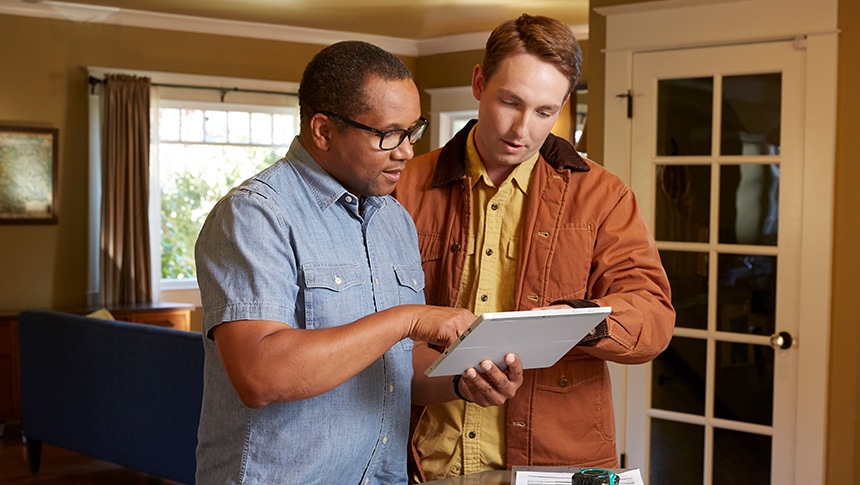How to read a heat pump contractor bid
Cooling Solutions, Heat Pump, Heating and Cooling, Heating Solutions Updated: March 2, 2023Know what to look for when comparing bids for your project

Know what to look for when comparing bids for your project

When you are ready to hire a contractor for heat pump installation, it is a good idea to seek bids from at least 3–4 different contractors. Reading and comparing bids for a service like this can be a daunting task. Not all bids include the same information, and it can be difficult to know what to look for. Consider the following when bringing contractors out to bid your project.

Installation costs can vary significantly, both by contractor and across different conditions of the installation location. As referenced in the section above, be sure to thoroughly review the estimates provided by the contractors bidding on your project and compare what is and is not in the description of services. While coming at an additional cost, there are optional services and features that could make or break the performance of your heat pump. Examples include: designing a site-specific mounting solution of the compressor, duct sealing/insulation/repair, enhanced air filtration systems, energy or heat recovery ventilation, and enhanced heat pump controls (thermostat).
The costs associated with a heat pump are not limited to the initial installation costs. The amount of money spent to power the heat pump, better known as the operating cost, is just as important. While there isn’t a way to predict the exact cost of operating your new heat pump, there are six key factors that influence this cost.
1. System settings/customer behavior: Heat pump controls (thermostats) often have settings that prioritize either comfort or efficiency. Comfort settings may rely on backup electric resistance heat during the colder stretches of a heating season, which is a more expensive form of heat. Customers also play a key role in operational costs based on how they adjust the thermostat settings during the heating and cooling seasons. Avoiding significant swings in temperature (greater than 3–5° F) allows your heat pump to operate with higher efficiency, similar to how a car uses less gas when cruising at a consistent speed vs. frequent braking/acceleration. Smart thermostats can help the user choose an energy-efficient mode of operation, but it is important to consult the heat pump installer before switching to a smart thermostat. Some heat pump models need to be paired with a very specific thermostat in order to operate properly.
2. System installation: The quality of your installation can have as much, if not even more of an impact on the performance of your system than the choice of equipment. A properly installed entry level heat pump could easily cost less to operate than a poorly installed top-of-the-line, high-efficiency heat pump. A properly installed heat pump involves:
3. Thermal and air leakage of a home: Often the focus starts and stops with the core components of the heat pump when planning for a new system. However, the readiness of the home itself should also be considered, preferably before a specific heat pump model/size is chosen. Energy Trust recommends you consult a professional to verify the level of attic, wall and floor insulation in your home. Also consider upgrading your windows if you currently have single-pane or aluminum-frame windows.
Read more about insulation options and find incentives. Learn about high-efficiency windows and available incentives.
4. Routine maintenance: Heat pumps rely on clean filters, clean coils and unobstructed outdoor units to function properly. Be sure to follow the manufacturer and installer maintenance instructions and to have your unit serviced annually by an HVAC contractor.
5. Cost of electricity: As the price of electricity fluctuates, so will the cost to operate your heat pump. You can find the overall amount of electricity used at your home as well as the cost/kWh on your monthly utility bill statement to see if an unusually high bill is due to an increase in usage or rising fuel costs. A mysterious spike in electricity costs could also be the result of a heat pump malfunction.
6. System performance rating(s): As mentioned above, your contractor will likely present the HSPF (heating) and SEER/EER (cooling) efficiency ratings on the proposal. The higher the rating, the less energy the system is designed to use.
Inclusions are what the contractor is committing to complete for the quoted amount. Exclusions typically describe work related to the primary services that the contractor is not agreeing to perform. This may include removing or recycling existing equipment, replacing an existing air handler, modifying electrical components, etc. It is important to ask your contractor if they believe you will need any of these services in order to complete the project.
Unforeseen circumstances typically involve site-specific conditions that were not evident when the original project scope was priced out and must be dealt with to continue the work. Examples could include mold hiding behind a wall, damaged electrical wiring obscured by insulation or termite damage to structural wood framing. It is important to discuss with your contractor how they will communicate with you before either completing the extra work and tacking on additional costs to your invoice, or potentially dipping into a contingency fee.
As you collect bids from multiple contractors, you will likely have to decide between different manufacturers. Each contractor likely sells multiple brands of equipment to their customers. Understanding the difference between each of the popular heating manufacturers can be very difficult. Manufacturers and their associated dealers (contractors) are very good at selling their specific equipment (that’s their job!). Beyond referring to third-party, consumer report-style websites, you can look for other distinguishing factors:
Remember, you are not just purchasing a piece of equipment, you are also hiring a company to perform the installation. Look out for services included and not included that can impact the overall performance of your heating system. Some key services include:
An oversized system will likely cycle on and off too frequently, significantly reducing energy efficiency and putting extra strain on various parts. An undersized system will struggle to maintain the desired temperature and can rely heavily on backup heat.
Ask your contractor if they are using a heat loss calculation to determine the right size of a heat pump for your home. You can also ask to see the results of the calculation to confirm the resulting heat loss value (measured in BTUs) is similar to the size of the proposed heat pump (also measured in BTUs).
Ready to start gathering bids for your heat pump project? Use our search tool to find trade ally contractors near you.
